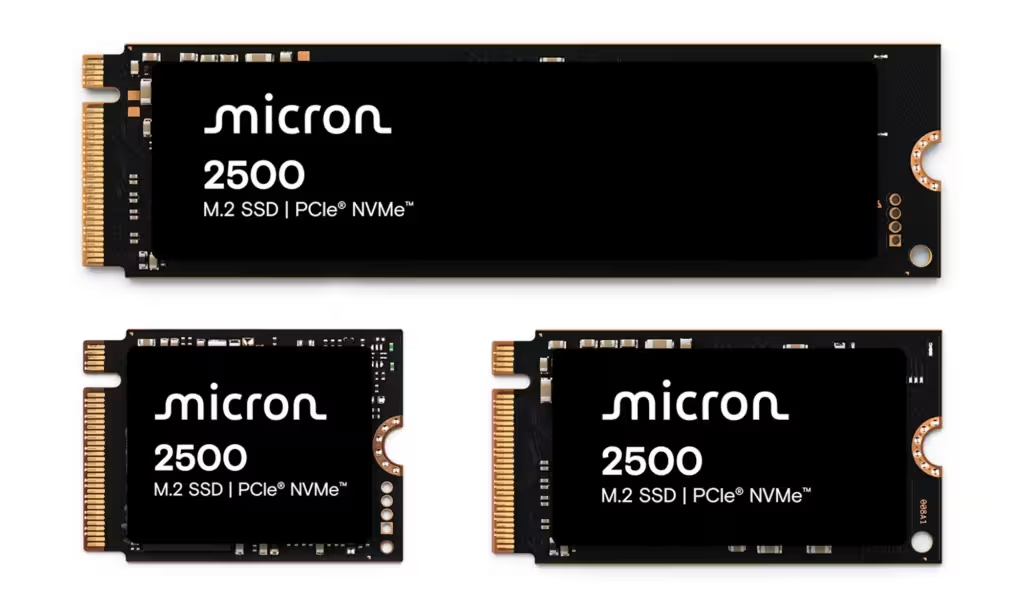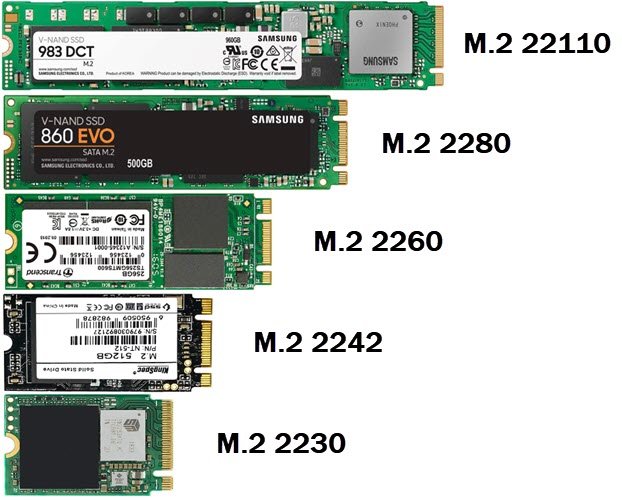The physical dimensions of M.2 SSDs play a significant role in determining the compatibility and performance of the devices. M.2 SSD sizes are expressed in terms of width and length. Here are the common M.2 SSD sizes and their differences:
Dimension Definitions

2230 :
- Width : 22mm
- Length : 30mm
- It is often used on smaller devices, especially laptops and tablets.
2242 :
- Width : 22mm
- Length : 42mm
- Another shorter size offering larger storage capacities, preferred in some mini PCs and laptops.
2260 :
- Width : 22mm
- Length : 60mm
- This size is commonly used for mid-range SSDs and is found in many desktops and laptops.
2280 :
- Width : 22mm
- Length : 80mm
- It is the most common M.2 SSD size and is often preferred in high-performance systems.
22110 :
- Width : 22mm
- Length : 110mm
- It is generally used in server and high-capacity storage applications.
Supported Lengths

Some systems may support different M.2 lengths. This allows users to choose the appropriate size SSD based on the capacity and design of their device. For example, if a motherboard supports both 2260 and 2280 size SSDs, the user can choose between the two sizes based on their preference.
Meanings of ‘ds’ and ‘ss’
- ‘ds’ (double sided) : Refers to double-sided NAND memory modules. These types of SSDs have the potential to have more storage capacity because NAND memory chips are placed on both sides.
- ‘ss’ (single sided) : Refers to single-sided NAND memory modules. In these SSDs, NAND memory is only placed on one side, which usually results in a smaller capacity.
Conclusion
M.2 SSDs come in different sizes, including 2230, 2242, 2260, 2280, and 22110. Each size is designed for specific applications and devices. Which size to use depends on the system’s specifications and user needs. Additionally, the ‘ds’ and ‘ss’ labels provide information about the SSD’s structure, making it easier for users to make a choice that fits their storage needs. When choosing an SSD, it’s important to consider factors like size and NAND placement to ensure the best performance and compatibility.


